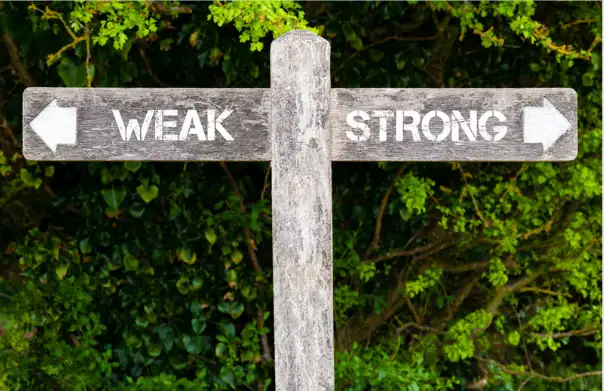Weak vs. strong sustainability: what is the difference?
Reading Time: 3-4 minutes
Reading Time: 3-4 minutes

For the last centuries, we’ve been exploiting our planet’s natural resources. Meanwhile, natural disasters, such as the intensification of floods, droughts, and the increase of the sea level, are signaling us that we have to change something in the way we live. In fact, according to the WWF, 28 July 2022 is Earth Overshoot Day, the date in which humanity has already consumed all the resources that the Earth can replenish in one year. As the origins of the distorted relation to biodiversity and ecosystems are numerous, we decided to tackle it with the notions of “weak vs. strong sustainability”. What are these concepts and how are they relevant nowadays?
These approaches put in parallel two notions: natural capital and manufactured capital. Natural capital is the natural and environmental resources available in a certain area. This term also represents a “metaphor to indicate the importance of the ecosystems in the development of the society and the human welfare”, as stated by Ekings. On the other hand, manufactured capital relates to material goods (tools, machines, buildings, infrastructures) necessary for the development of the economy and the maintenance of human welfare.
The difference between weak and strong sustainability is in how they see natural capital and manufactured capital. Weak sustainability proponents consider natural and manufactured capital as interchangeable, while strong sustainability doesn’t. They also think that the weakening of natural capital can be replaced easily by technical solutions.

According to the weak sustainability approach, there is no fundamental difference between generating human welfare with natural capital or any other capital (or any specific capital). Sustainability is then achieved when we maintain increase the balance between natural capital and manufactured capital.
This approach to sustainability was particularly promoted during the Enlightenment. Over the last centuries, we have been thinking that natural resources are unlimited and that we can exploit them without acknowledging the negative consequences it has on our life. Weak sustainability reminds of the non-alarmist eco-modernist narrative, in which scientific and technological progress and growth (manufactured capitals) would enable us to mitigate our environmental impact. However, the eco-modernist approach (just like the weak sustainability one) might be a gamble.
By unknowingly privileging the weak sustainability approach, we contributed to maximising monetary compensation for environmental degradations that we directly on a daily basis. Although some still support weak sustainability, experiences and scientific progress have shown their economic and ecological limits . Given the climate urgency and the challenges of the ecological transition, we need to consider other approaches.
Strong sustainability proponents disagree with the interchangeability of natural and manufactured capitals. According to them, natural capital is essential to produce manufactured capital and is not considered as an inexhaustible stock of resources. It is rather considered as complementary to manufactured capital and other forms of capital in producing human well-being (Brand 2009 cited by Pelenc & Ballet).
While destruction of manufactured goods is rarely irreversible, this is not the case for natural capital. Destruction of natural capital would mean the disappearance of ecosystem goods and services essential to human welfare. Talking about ecosystem services, the Millennium Ecosystem Assessment defines those as the benefits people receive from ecosystems, and among them some of which are marketed in our economy. These ecosystem services include provisioning services such as food, water, timber, and fibre; regulating services that affect climate, floods, disease, wastes, and water quality; cultural services that provide recreational, aesthetic, and spiritual benefits; and supporting services such as soil formation, photosynthesis, and nutrient cycling.
One idea proposed in 2015 to preserve our ecosystem services was to establish “critical natural capital” (CNC). According to Chiesura and de Groot, CNCis commonly defined as that part of the natural environment, which performs important and irreplaceable functions. The idea is to define parts of the ecosystems vital to human existence and welfare and then establish a threshold from which its degradation should be evaluated as “critical”. Such a reflection on interactions between the natural environment and human well-being deals however with a bunch of complex questions.
For example, what are the criteria to assume that degradation (or the disappearance) of one or the other natural capital area one will affect human welfare? How do you know which natural capital area is critical for whom and why? What should be considered as an “intolerable loss”? Given their complexity, such questions were tackled at experts and scientist levels.
However, as the civil society actors and companies are the first victims of climate disasters they are likely to play a central role in the definition of CNC and our relation to biodiversity.
To make a long story short, weak sustainability sees economy and ecology as interchangeable, with the effect that the economy often becomes an ‘end in itself’. On the opposite, strong sustainability clearly states: without nature, no people, and without people, no economy. Looking back at our slogan, you might already know the approach we privilege. However, as mentioned before, this requires the involvement of all actors of the civil society.
Eventually, enlightened environmentalism states that the right knowledge and driving forces that increased human welfare in the last decades could be relevant to raise awareness about the necessity of preserving natural capital and our biodiversity.
Confronted with these challenges ahead, we have two options: complacent or conditional optimism. Either we keep claiming that preservation of natural capital and ecosystems is vital, but keep complaining or mourning that nothing happens in this sense. Or despite all challenges linked to the ecological transition, we know deep down, we can handle these with the right knowledge, tools, by innovating and raising awareness among civil society actors. As Steven Pinker, enlightened environmentalism proponent whose approach deserves to be discussed in another paper, “we cannot be complacently optimistic about climate change, but we can be conditionally optimistic”. At Tapio, we already made our decision. What about you?